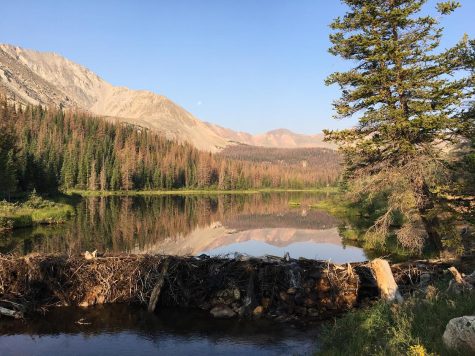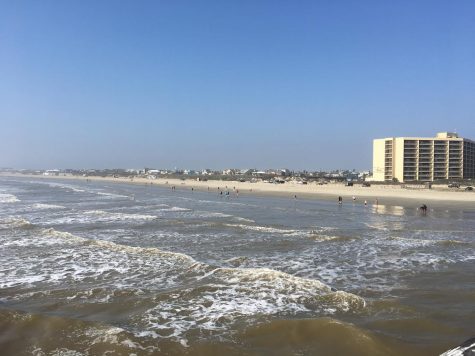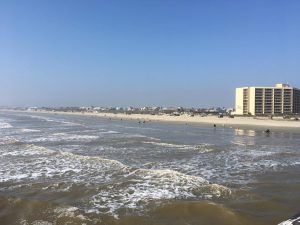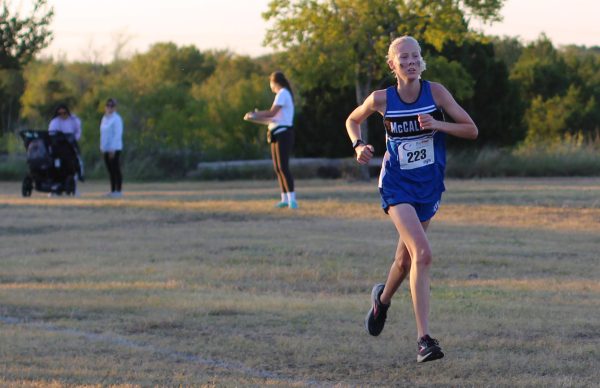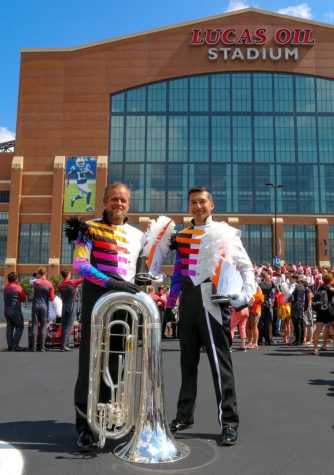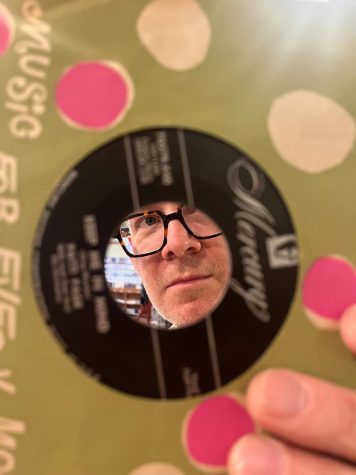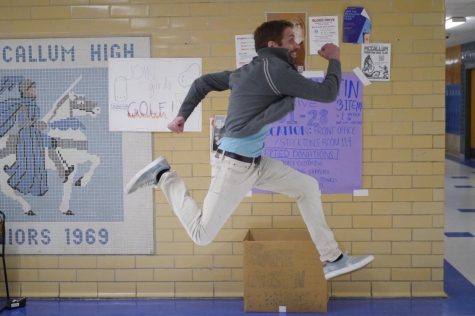Rhodes Traveled: May the forts be with you
West Texas offers centuries history just a road trip away
March 10, 2019
I’ve told of my adventures in the far off lands of Colorado and Chicago, but now it’s time to return to the great state of Texas. For those who remember, the last Texas destination I visited was Corpus Christi, but now with spring break on the way, it’s time to head west.
It’s easy to forget the true size of the state. It has an area larger than France, and El Paso is about as close to Los Angeles as it is to Houston.
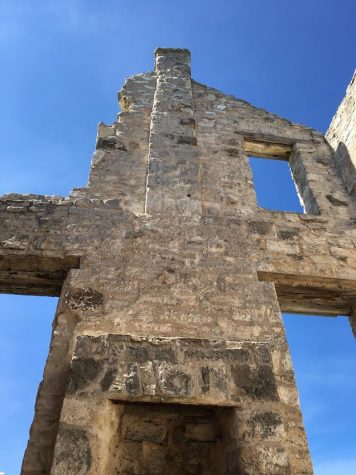
Apart from its enormous size, Texas also has a rich history. Although not as old as France, Texas has some structures and stories that date back hundreds of years. One of the best ways to experience this history is by visiting the old forts in the West. Built before Texas was even a state, the forts served as protection to the settlers from the Native-American tribes. Once home to hundreds of soldiers and families, all that remains of these areas are the stone shells of the buildings and various discovered artifacts. Most also have a visitor center, which displays the artifacts, as well as some buildings that have been rebuilt to show how they would have looked when the fort was in use.
There are several forts in west Texas alone, but the four I’ll be focusing on are Fort McKavett, Concho, Chadbourne and Griffin. Most of these forts are out in the middle of nowhere (save for Concho, which is in the middle of San Angelo, population 100,000). A round trip that hits all the forts is about 600 miles and takes a couple of days, depending on the amount of time spent at each location. The aforementioned San Angelo and the small city of Abilene are the two urban areas that have a decent size, and even some hotels and restaurants.
The closest fort to Austin is McKavett, which is about 170 miles away and is considered one of the best preserved forts in the state. Built in 1852, the fort was used on and off until 1883. During its time in operation, it was used to protect settlers and westbound immigrants. After conflicts with the Native Americans subsided, it served as a supply depot. After its abandonment, it was occupied by squatters for nearly 100 years, who helped the buildings from decaying too much.
One of the more notable structures is the commanding officers’ quarters, the shell of a two-story building and chimney. There are also a few smaller buildings, including the foundation of some of the barracks. Visitors are allowed to explore these ruins, as well as the restored ones, like the officers’ quarters, barracks and schoolhouse.
Fort McKavett offers much history but not much to eat. The visitor center may have some snacks, and the closest town is Menard, which has a Lowe’s, a gas station and not much else. If it’s a nice day, you could pack a picnic. Or you could head over to the closest town with a population over 10,000, San Angelo, which has some good restaurants, such as classic steak houses like Zentner’s Daughter Steak House and nice Mexican cafes like Fuentes Cafe. It’s also home to Fort Concho.
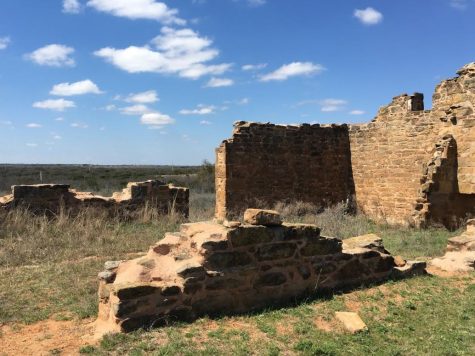
The stone ruins of Fort Chadbourne overlook the Texas wilderness. Built in 1852, they were once used to protect soldiers and their families, but now all that remains are a few stone walls. In its long history, it also served as a mail-route stop and as a private ranch.
Concho was established in 1867, and like McKavett, was used to protect settlers and help supply the western settlements. It was abandoned in 1889 and is now a national historic landmark owned by the city of San Angelo. Unlike McKavett, the structures here have all been reconstructed, as in none of the buildings are empty stone shells, so the fort looks mostly the same as when it was operational. The staff is dressed in historically accurate clothing as part of the fort’s living history program. When I was there, we met an old man with a wooden leg and a young boy who would shoot off a small canon across the parade grounds.
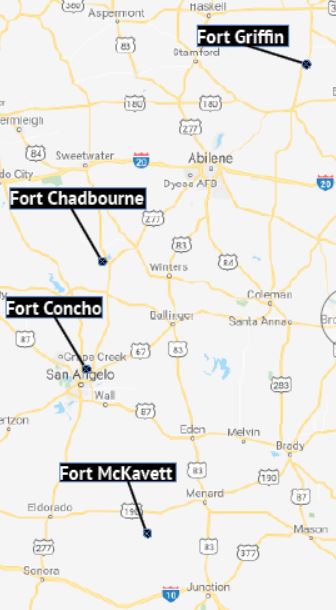
A trip west of Austin is sure to fortify your mind if not your appetitite. Illustration by Max Rhodes.
If tours are available, I would definitely recommend taking one. The tour guides are very knowledgeable and provide information that you wouldn’t get from the various information plaques around the fort. A few of the buildings are open to the public and have artifacts that would have been present when the fort was in use. There are officers’ quarters, barracks, the mess hall and several other buildings. One of the buildings has also been converted to a museum dedicated to the telephone. Our tour guide admitted he wasn’t sure why it was at the fort, but it was a good stop for those who are interested in dialing up the rich history of the phone.
Depending on how much time is spent at the forts, San Angelo could be a possible stop for the night. There are several places to stay, like the Quality Inn, which offers nice rooms and a coupon for free breakfast at the little diner next door. The next fort on the list, and one of my personal favorites, is Fort Chadbourne, which is about a 45-minute drive from San Angelo. Established in 1852, it has a rich history ranging from offering protection against Native Americans, to serving as a stop on the mail route, to operating as a privately owned ranch. All of this and more are covered in the newly restored visitor center, which has artifacts and plenty of information. Also in the center is a Emmy-award winning short video on the history of the fort.
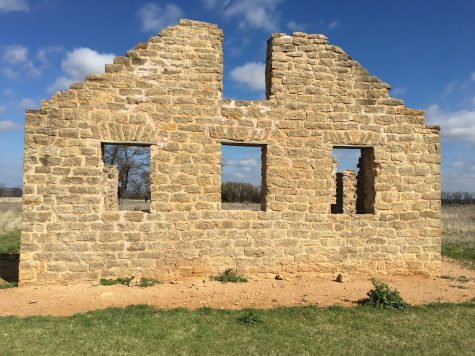
Outside, a tour guide will take you around the fort and show off the ruins and reconstructed buildings. Our guide had some great stories on the history of the fort, and he told us about how he actually helped rebuild some of the buildings.
The final fort on our list, Griffin, is about 100 miles north of Chadbourne (It’s also about 100 miles directly west from Fort Worth). Halfway between Chadbourne and Griffin is Abilene, which is about the same size as San Angelo. Now, Griffin is kind of in the middle of nowhere, and Abilene is the nearest town where I would recommend finding a hotel. Again, it depends how much time is spent at each fort, but Abilene has plenty of hotels and restaurants, like The Shed Market Barbeque and a Best Western.
Fort Griffin was built in 1867 and, like the other forts, was used to protect settlers and soldiers form Native-American attacks. Originally, the fort had more than 90 structures, but most of them were made of wood, so the only thing that remains today are the stone shells of the more prominent buildings. All of this information and more are covered in the newly refurbished visitor center. Outside you may notice a few members of the Official State of Texas Longhorn Herd, which freely roam the grounds. Most of the remaining buildings of the fort are fairly far apart, so golf carts are offered for a easier visitor experience. If the weather’s nice, there are campgrounds on the property, which might be nicer than a small hotel.
After you’ve had all the Texas history you can take, there’s a 230-mile four-hour trip home. There aren’t many interesting things on the way back, just a couple hundred miles of open Texas highway. With such a grand size, there’s always somewhere to go in Texas, it may just be 500 miles away.




